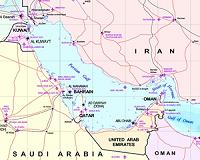| . |  |
. |
Bozeman MT (SPX) Dec 14, 2010 New research indicates that the speed of early forest clearance following human colonisation of the South Island of New Zealand was much faster and more intense than previously thought. Charcoal recovered from lake-bed sediment cores show that just a few large fires within 200 years of initial colonization destroyed much of the South Island's lowland forest. Grasslands and shrubland replaced the burnt forest and smaller fires prevented forests from returning. The findings - by an international team led by Dave McWethy and Cathy Whitlock from Montana State University- have just been published in the prestigious journal Proceedings of the National Academy of Sciences in the United States and will be explored further under new grants from the National Science Foundation Geography and Spatial Science (GSS) and Partnerships in International Research and Education (PIRE) programs. Previous studies by co-authors Matt McGlone and Janet Wilmshurst at Landcare Research in New Zealand showed that closed forests covered 85-90% of New Zealand prior to the arrival of Polynesians (Maori ) 700-800 years ago, but by the time Europeans settled in the mid 19th century, grass and shrubs had replaced over 40% of the South Island's forests. Despite this information, questions over the timing, rapidity, and cause of the extensive forest clearance have remained. The international team of scientists reconstructed the environmental history of 16 small lakes in the South Island, New Zealand. They used pollen records to reconstruct past vegetation, charcoal fragments to document fires, and algae and midge remains to quantify changes in lake chemistry and soil erosion. The cores showed several high-severity fire events occurred within two centuries of known Maori arrival in the 13th Century. "The impacts of burning were more pronounced in drier eastern forests where fires were severe enough to clear vast tracts of forest and cause significant erosion of soils and nutrients. Because the initial Maori populations were small, we can only conclude that forests were highly vulnerable to burning," McWethy said. Wilmshurst said archaeological evidence suggests that successful cultivation of introduced food crops, such as kumara and taro, was only possible in warmer northern coastal areas and the starch-rich rhizomes of bracken fern, which replaced the burnt forests, provided an essential part of Maori diets in colder regions. "In their efforts to increase the productivity of lowland forests for food, Maori encouraged a more heterogeneous and economically useful fern-shrubland at the same time as making travel easier to search for food and stone resources for making tools," Wilmshurst said. Newly derived records of past climate enabled the team to disprove the hypothesis that unusual climate conditions encouraged fire at around the time of Maori settlement. "Our evidence suggests that human activity was the main cause of the fires, and that these fires were not related to any unusually dry or warm conditions at the time," McGlone said. Before human arrival in New Zealand, fire was naturally rare in most forests, with lightning-started fires occurring perhaps only once every 1-2 thousand years. "What is remarkable is that small mostly subsistence-based groups of people were able to burn large tracts of forests throughout the relatively large South Island (151,215 km2) in only a few decades," McWethy said. Whitlock said "Changes in the fossils and chemistry of the lake sediments showed that soil erosion followed initial forest clearance. In some regions, this degradation was exacerbated by intensive clearance in the 19th Century by European pastoralists who developed the land for grazing sheep and farming." This study shows the extent to which a small number of settlers can transform a vast and topographically complex landscape through land-use change alone, and highlights how exceptionally vulnerable New Zealand forests were to fire in the past. The authors suggest that understanding the history of people and fire in New Zealand will help researchers and managers develop informed forest fire management and conservation strategies.
Share This Article With Planet Earth
Related Links Montana State University All About Human Beings and How We Got To Be Here
 Lost Civilization Under Persian Gulf
Lost Civilization Under Persian GulfChicago IL (SPX) Dec 10, 2010 A once fertile landmass now submerged beneath the Persian Gulf may have been home to some of the earliest human populations outside Africa, according to an article published in Current Anthropology. Jeffrey Rose, an archaeologist and researcher with the University of Birmingham in the U.K., says that the area in and around this "Persian Gulf Oasis" may have been host to humans for over 100 ... read more |
|
| The content herein, unless otherwise known to be public domain, are Copyright 1995-2010 - SpaceDaily. AFP and UPI Wire Stories are copyright Agence France-Presse and United Press International. ESA Portal Reports are copyright European Space Agency. All NASA sourced material is public domain. Additional copyrights may apply in whole or part to other bona fide parties. Advertising does not imply endorsement,agreement or approval of any opinions, statements or information provided by SpaceDaily on any Web page published or hosted by SpaceDaily. Privacy Statement |